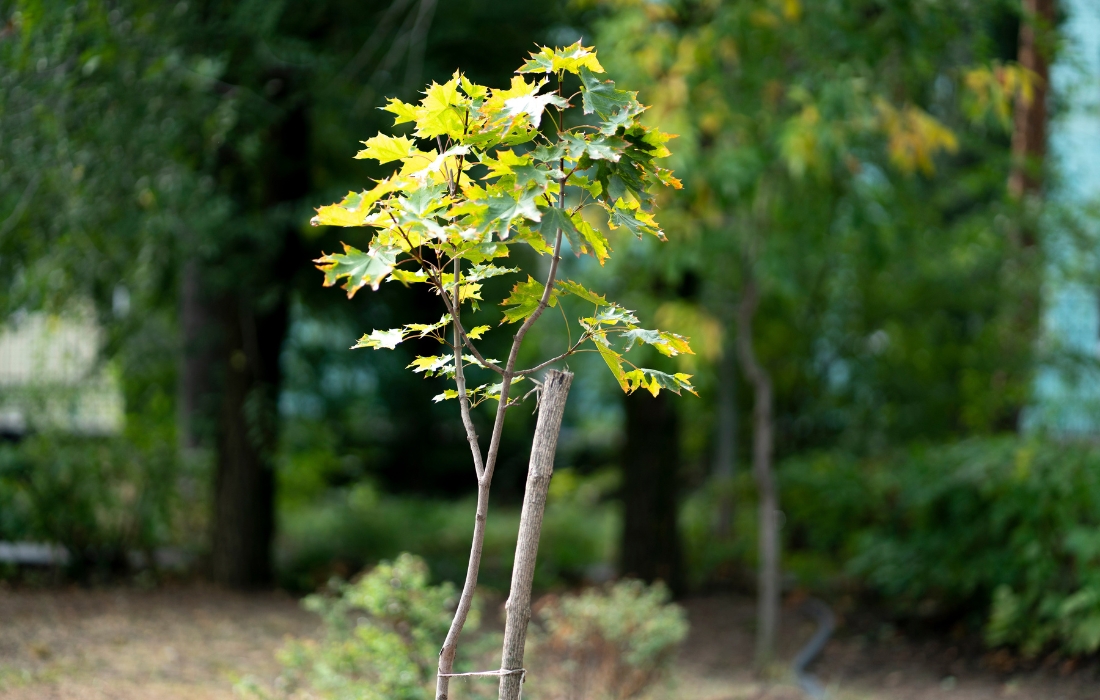
Just like children, trees benefit from gentle direction when they’re young. When you train young trees, you’re helping them grow in ways that make them stable and long-lasting. If you’re caring for a young tree in your backyard or starting a tree sanctuary, early training of your young trees sets the foundation for decades of healthy growth!
How To Strengthen Your Tree While It’s Young
Tools You’ll Need To Train Young Trees
Having the right tools makes training easier, safer, and more effective:
- Soft ties or tree straps for guiding branches and trunk
- Pruning shears or hand pruners for small corrections
- Stakes for temporary support
- Mulch like organic wood chips or shredded bark
- Watering tools like a hose or soaker hose for deep watering
Avoid large, heavy equipment on young trees. Lightweight hand tools work best. If you do need a hand with older, more mature trees, contact a tree removal specialist near you to safely handle them for you.
Choosing the Right Tree for Your Space
The first step to training young trees is picking the right one. Some trees are easier to train and better suited for home landscapes.
- Climate and Hardiness: Check what zones your tree thrives in. Some species struggle outside their preferred temperature ranges.
- Soil Type: Sandy, clay, or loamy soil can affect root growth and stability. Loose sandy soil drains quickly, dense clay soil can suffocate roots, and loamy soil provides the best balance of drainage, nutrients, and support.
- Sunlight: Most young trees need full sun, but some tolerate partial shade.
- Mature Size: Know how tall and wide your tree will grow. Avoid planting a giant tree under power lines or too close to structures, so that it doesn’t grow to interfere with buildings, utilities, or other plants. This could overstep New York’s tree safety hazards or require costly corrective work later.
- Growth Rate: Fast growers require more frequent maintenance, while slow growers are easier to manage but take longer to fill your space.
Choose a species with naturally strong wood and a single, dominant growth habit for easier training. In New York, species like Northern Red Oak, White Oak, Red Maple, Hackberry, and London Plane Tree are excellent options because they have strong wood, a single dominant trunk, and adapt well to local soils and urban conditions.
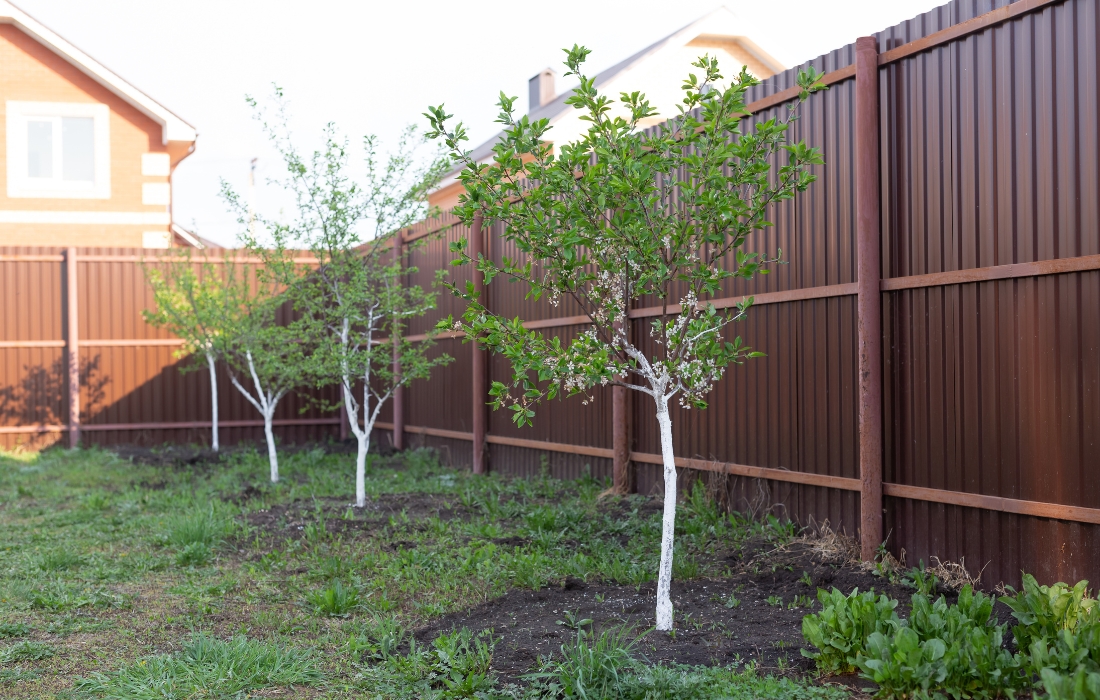
Why Early Tree Training Matters
When trees are young, their structure is flexible and responsive. Early care helps:
- Encourage one dominant trunk instead of multiple weak ones.
- Space branches evenly so they don’t compete for sunlight.
- Create a balanced, wind-resistant form.
- Reduce the chance of limb breakage later in life.
Supporting Your Tree’s Trunk
1. Check the Planting
- Make sure the root flare is just above soil level. The root flare is the area at the base of a tree where the trunk naturally widens and transitions into the roots. This prevents rot, guarantees proper root growth, and supports a strong, stable trunk.
- Plant in a hole twice as wide as the root ball (the mass of roots and surrounding soil at the base of the tree that was grown or dug up), no deeper than its height
- Keep the tree upright. If a young tree leans, it can cause uneven growth, weak structural points, and make the tree more prone to falling or splitting as it matures.
2. Stake Properly (If Needed)
- Use two stakes on opposite sides, 18 inches from the trunk. Stakes help support the young tree while its roots establish, keeping it upright and preventing it from leaning or being damaged by wind.
Secure with soft, flexible ties. - Allow slight movement to strengthen the trunk. This movement encourages the trunk to grow thicker and stronger, much like exercise strengthens muscles, helping the tree develop a sturdier, more resilient structure.
- Remove stakes after 1 to 2 seasons.
3. Choose a Single Leader
- Identify the main vertical stem. The main vertical stem, or leader, is the tallest, straightest stem that forms the tree’s central trunk.
- Remove or redirect competing stems early. A competing stem is any side stem that grows at the same height or close to the main leader and threatens to become equally dominant, often appearing nearly as tall or straight as the leader and potentially creating a “V” shape with the trunk instead of a strong single column.
- Always cut just outside the branch collar. Cutting here allows the wound to close more quickly, reduces the risk of decay, and preserves the strength and health of the trunk or main branch.
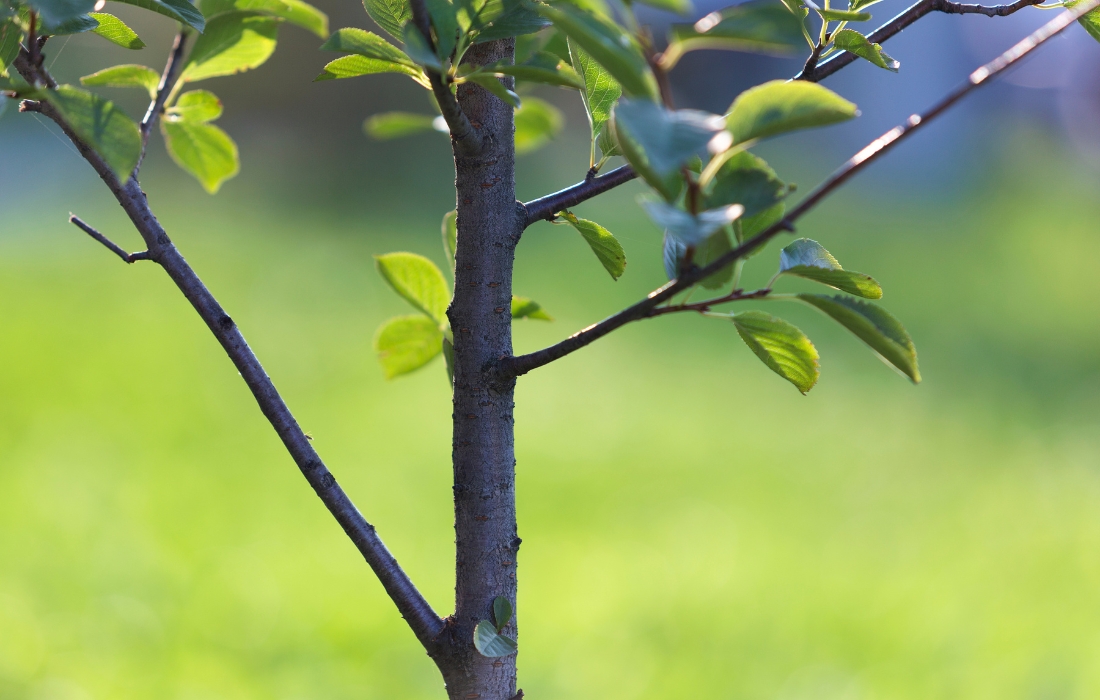
Building a Strong Base From The Branches
1. Proper Spacing
- Vertical spacing: 6 to 12 inches apart.
- Spiral slightly around the trunk for balanced growth.
- Avoid clusters of branches emerging from the same height.
2. Strong Angles
- Aim for U-shaped attachment angles.
- Redirect narrow “V” angles using soft ties or shortening the branch.
3. Manage Competing Branches
- Shorten fast-growing branches to balance the tree.
- Remove inward-facing twigs or crossed branches.
- Keep lower branches temporarily. They help feed the trunk.
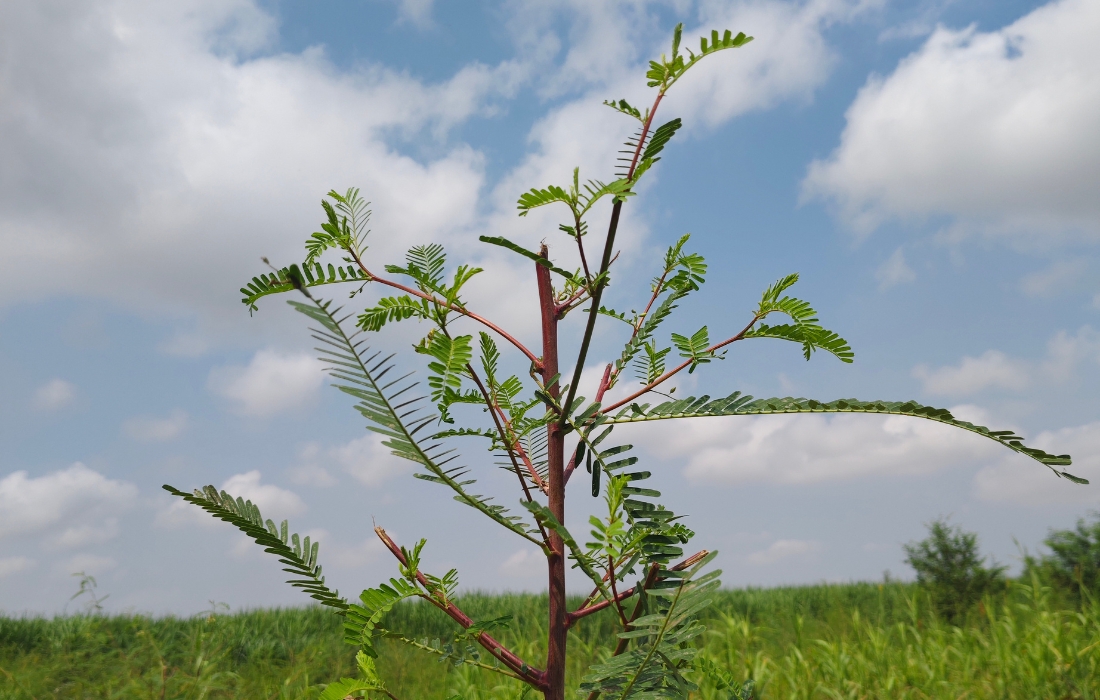
Growing A Healthy Tree Canopy
1. Encourage Air and Light Flow
- Thin any small, crowded twigs for sunlight penetration to important parts of the tree.
- Remove inward or downward growth.
- Maintain an open, even outline.
2. Maintain a Central Leader
- Keep the dominant leader at the top.
- Remove competing top branches early.
3. Monitor Annual Growth
- Check for uneven growth or damage.
- Make small corrections yearly to keep the canopy balanced. Yearly canopy corrections include shortening long branches, removing inward or crossing growth, pruning crowded areas of a tree, trimming dead wood, and redirecting awkward branches to maintain balance and health.
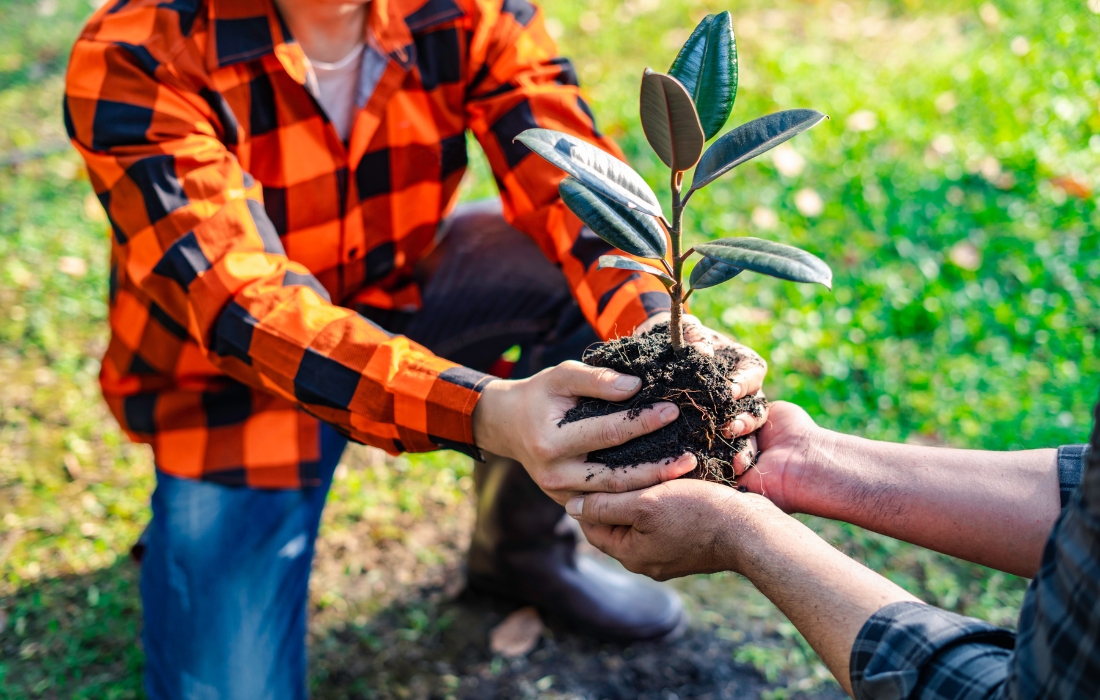
Tree Stability From Ground Support
1. Water Deeply and Consistently
- Water slowly, deeply, once or twice per week.
- Avoid shallow daily watering. As it encourages roots to stay near the surface, making the tree less stable and more prone to drought stress, instead of growing deep, strong roots that anchor the tree and access nutrients from the ground.
2. Mulch Smartly
- Spread 2 to 3 inches of mulch in a wide circle. Mulch helps with young tree training by retaining soil moisture, regulating temperature, suppressing weeds that compete for nutrients, and protecting roots from damage, all of which create a stable environment for strong, healthy growth.
- Keep 2 to 3 inches away from the trunk.
- Replenish annually.
3. Avoid Soil Compaction
- Limit foot traffic or heavy equipment near roots. Since these roots are still developing, experiencing any sort of impact can harm their growth significantly.
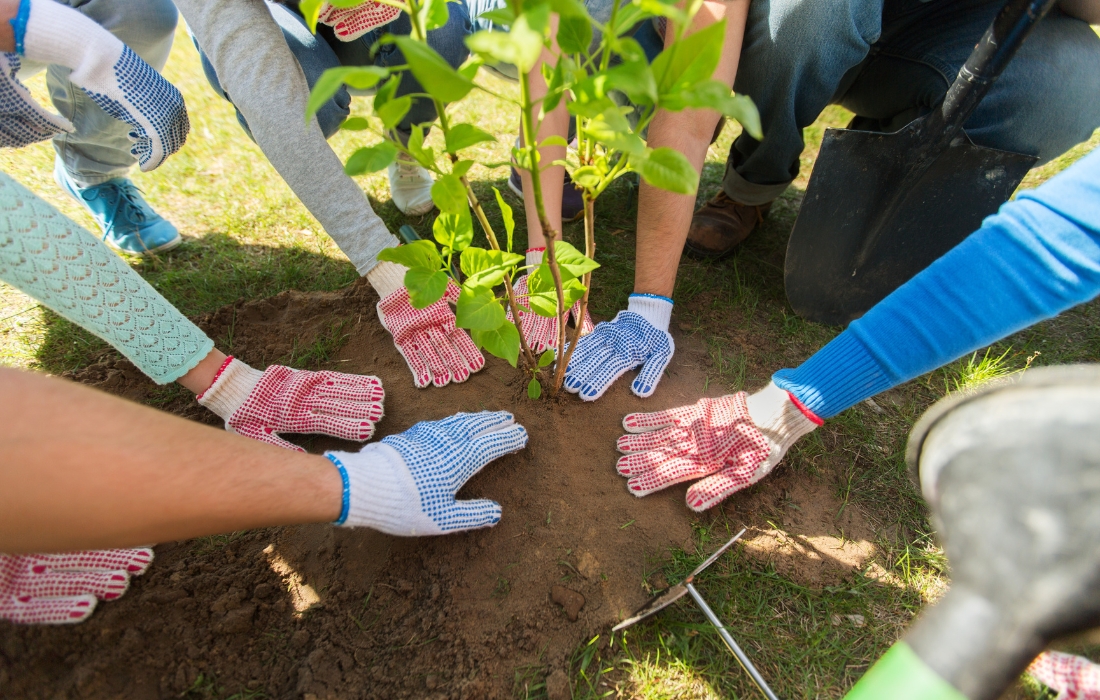
Troubleshooting Young Tree Growth Problems
Even when you properly train young trees, issues can arise! Don’t panic and instead be proactive about these issues. Here’s what we’ve seen in young trees over the years and how you can train young tree while avoiding these issues:
- Leaning trunk: Adjust stakes and gently straighten the tree. A leaning trunk can lead to uneven growth, weak structural points, and increased risk of the tree falling or splitting as it matures, making early correction important.
- Co-dominant leaders: Remove one early to prevent splitting.
- Nutrient deficiencies: Yellowing leaves may indicate a lack of nitrogen or iron. Consider light fertilization with natural fertilizers like compost, well-rotted manure, bone meal, or seaweed extract to provide slow-release nutrients and improve soil health. Store-bought options, such as balanced slow-release tree fertilizers or specific supplements like nitrogen or iron, can also be used to address deficiencies and promote strong root and canopy growth.
- Compacted soil or poor drainage: Loosen soil around roots and improve water flow.
Tip: Always make small, careful corrections. Drastic changes can stress the tree.
The End Of Our Training Means The Start Of Your Tree’s Journey
While training your young trees is a lot of work, you’ll thank yourself in the long run. With consistent attention and a few yearly adjustments, your trees will grow into healthy, resilient, and beautiful additions to your yard or sanctuary that can be enjoyed for decades!
